Colowick S.P., Kaplan N.O.
Table of contents :
34.pdf……Page 0
Introduction……Page 9
Clodronate Liposomes as a Tool to Investigate Macrophage Activities In Vivo……Page 10
Clodronate Liposomes in Immunodeficient Mice to Study Grafted Human Cells In Vivo……Page 11
Autoantibody-Mediated Disorders……Page 12
Transplantation……Page 13
Neurological Disorders……Page 15
Gene Therapy……Page 16
Drug Targeting……Page 17
Preparation of Multilamellar Clodronate-Liposomes……Page 18
Spectrophotometric Determination of the Amount of Liposome-Encapsulated Clodronate……Page 21
Introduction……Page 23
Experimental Design……Page 25
Reagents and Sources……Page 26
Labeling of Protein and Separation of Labeled Protein……Page 27
Preparation of Liposomes34……Page 28
Encapsulation of Protein in Liposomes……Page 29
Media……Page 30
Fluorescence Microscopy……Page 31
Intracellular Trafficking of Liposomal Antigens……Page 32
Demonstration of Transporter Associated with Antigen Processing Proteins in Trafficking……Page 35
Detection of Major Histocompatibility C-Peptide Class I Complex on the Cell Surface……Page 36
In Vivo Processing of Liposomal Antigens……Page 38
Conclusions……Page 40
Introduction……Page 41
Preparation of Lipid Stocks and Solvents……Page 42
Rotary Evaporation and High Vacuum Treatment……Page 45
Lyophilization……Page 47
Encapsulation of Antigen……Page 48
Phospholipids……Page 50
Encapsulated Protein……Page 51
Procedure……Page 53
Measurement of Emulsion Stability……Page 54
Factors Affecting Emulsion Stability……Page 55
Introduction……Page 58
Materials……Page 59
Conjugation of Peptides to Carrier Proteins……Page 60
Synthesis of N-(Bromoacetyl)phosphatidylethanolamine……Page 62
Synthesis of Thiol-Reactive Lipopeptide (Fig. 2)……Page 63
Small Unilamellar Vesicles……Page 65
Quantification of Thiol-Reactive Functions with Ellman’s Reagent……Page 66
Diepitope Constructs (Fig. 4)……Page 67
Immunization for Diepitopes Construct……Page 70
Protection Experiments……Page 71
Design of Liposomal Monoepitope Constructs……Page 72
Important Parameters for the Immunogenicity of the Monoepitope Constructs……Page 73
Design of Liposomal Diepitope Constructs……Page 75
Important Parameters in the Immunogenicity of Liposomal B and Th Diepitope Constructs……Page 78
Acknowledgments……Page 80
Influenza Virus……Page 81
Virosomes……Page 82
Interaction of Virosomes with the Immune System……Page 83
Background……Page 85
Virus, Reagents, Miscellaneous……Page 86
Reconstitution and Encapsulation Procedure……Page 87
Composition……Page 88
Morphology……Page 90
Fusion Activity……Page 91
Responses against Influenza Virus……Page 92
Virosomes as a Carrier System for Unrelated Antigens……Page 93
Delivery of NP Peptides……Page 94
Delivery of Protein Antigens……Page 95
Delivery of Antigen to the MHC Class II Presentation Route……Page 96
Summary and Conclusions……Page 98
Introduction……Page 99
Preparation of Liposomes Containing gp120 and Cytokines……Page 100
Slow Release of Trapped Proteins by Dehydration-Rehydration Vesicles……Page 102
Immunization of Mice with Soluble gp120 and Immunoliposomes Containing Cytokines and gp120……Page 103
Delayed-Type Hypersensitivity and Humoral Immune Response in Mice after Vaccination with Liposomes and Immunoliposomes Containi……Page 105
Cytokine Production by Lymph Node Cells from Mice Vaccinated with Immunoliposomes Containing Cytokines and gp 120……Page 106
Acknowledgments……Page 107
Introduction: Why and How We Study Antigen Presentation to T Cells……Page 108
Liposomes……Page 112
Cells……Page 113
Ex Vivo Antigen Presentation Assay……Page 114
Preparation of Antigen-Specific Transgenic T Cells for Adoptive Transfer……Page 115
Interleukin-2 Production by Transgenic T Cells Stimulated by DC In Vitro……Page 116
Efficiency of Antigen Stimulation by Cells That Take Up Liposome-Encapsulated Antigen In Vivo……Page 118
Efficient Activation of Specific CD4 T Cells After In Vivo Injection of Antigens Contained in Liposomes……Page 119
Determination of the Role of Fc Receptors in Liposome Uptake In Vivo……Page 120
Conclusions and Perspectives……Page 125
Introduction……Page 127
General Considerations……Page 128
N2 Cavitation……Page 130
General Considerations……Page 131
General Considerations……Page 133
General Considerations……Page 134
Concluding Remarks……Page 135
Introduction……Page 137
Lipids and Chemicals……Page 139
Freezing-Thawing Method……Page 140
Dehydration-Rehydration Method (Freeze-Drying method)……Page 141
Encapsulation Efficiency and Size Determination of pH-Sensitive Liposomes……Page 142
Induction of Antigen-Specific Cytotoxic T Lymphocyte Response In Vivo by peptides Encapsulated in pH-Sensitive Liposomes……Page 143
The Role of the Lipid/Peptide Ratio and Monophosphoryl Lipid Content……Page 145
Conclusion……Page 146
Introduction……Page 147
Occurrence of Complement Activation by Liposomes……Page 150
Measuring the Interaction of Liposomes with the Complement System……Page 151
Complement Activation by Liposomes……Page 153
Rationale and General Notes……Page 154
A Simplified Tube Assay for Hemolytic C (CH50)……Page 155
Plate Assay for Hemolytic C (CH50)……Page 156
Rationale and General Notes……Page 158
Examples for C Scission Product Immuno Assays……Page 159
Rationale and General Notes……Page 161
Porcine Bioassay of Liposome-Induced Complement Activation……Page 162
Introduction……Page 166
Growth of Methanobrevibacter smithii……Page 169
Lipid Extraction……Page 171
Preparation of Antigen (OVA)-Loaded Archaeosomes……Page 173
Immune Responses in Mice……Page 175
Solutions……Page 177
Proliferative Responses of Splenic Cells……Page 178
Solutions……Page 180
Cytoytic T-Cell Assay……Page 181
Acknowledgments……Page 183
Introduction……Page 184
Magnetoliposomes……Page 186
Synthesis of Water-Soluble Magnetic Fluid……Page 187
Mechanism of Magnetoliposome Formation……Page 188
Evidence for Bilayer Formation……Page 190
Stealth® Magnetoliposomes……Page 193
Synthesis of Phosphatidylethanslamine-Poly (Ethylene Glycol)-Biotin……Page 196
Protein Binding to Functionalized Stealth® Magnetoliposomes……Page 197
Superparamagnetic Contrast Agents……Page 198
Relaxivities of Stealth® Magnetoliposomes……Page 199
Blood Clearance of Stealth® Magnetoliposomes……Page 201
Magnetic Resonance Imaging Using Stealth® Magnetoliposomes……Page 202
Concluding Remarks……Page 206
Acknowledgment……Page 207
Introduction……Page 208
Liposomes in Ultrasonography……Page 209
Gas-Filled Liposomes……Page 210
Inherently Acoustically Reflective (Echogenic) Liposomes……Page 213
Labeling Liposomes with Ga-67 and In-111……Page 217
Labeling Liposomes with Tc-99m……Page 219
Conclusions……Page 223
Acknowledgments……Page 224
History……Page 225
Fluorescein Angiography……Page 226
Indocyanine Green……Page 227
Liposomes……Page 228
Production of Liposomes……Page 229
Selective Angiography……Page 231
Validation of the Technique……Page 232
Parameters……Page 233
Retinal Blood Flow Velocity……Page 235
Further Refinement of the Technique……Page 238
Visualization of the Fluorescent Vesicle System……Page 239
Retinal Vessel Velocity……Page 240
Choroidal Vessel Velocity……Page 241
Combination of Traditional Angiography with Liposome Technology……Page 242
Concluding Remarks……Page 244
Introduction……Page 245
Scintigraphic Imaging……Page 246
The Choice of the Radionuclide……Page 248
Encapsulation during Manufacturing……Page 250
Tin Technetium Reduction Method……Page 251
After-loading Methods……Page 252
External Surface Chelation Methods……Page 255
Concluding Remarks……Page 259
Introduction……Page 260
Liposome Formation……Page 261
Coupling with Fab’ Fragments……Page 263
Complement-Mediated Immunoassay……Page 265
Characterization of the Immunoassay……Page 266
Variations on the Theme……Page 268
Acknowledgments……Page 270
Introduction……Page 271
Preparation of Analyte-conjugated Liposomes Entrapping Alkaline Phosphatase……Page 272
Activation of Phospholipid Derivatives……Page 273
Activation of Analytes……Page 274
Conjugation of Analytes to Liposomes……Page 275
LIA by Complement-Mediated Lysis of Analyte-Conjugated Liposomes……Page 276
Preparation of Analyte-Phospholipase C Conjugates……Page 277
Conjugation of Phospholipase C to Analytes by Heterobifunctional Cross-Linking Reagents……Page 279
Coupling of Derivatized Phospholipase C and Analytes……Page 282
Lysis of Liposomes by Phosholipase C and Analyte Conjugate……Page 283
Determination of Antiserum Dilution for Performing Liposome Immunoassay……Page 284
Homogeneous Liposome Immunoassay Procedure……Page 285
Conclusion……Page 287
Introduction……Page 289
Some Principles of the Use of Atomic Force Microscopy……Page 290
Requirements for Sample Substrates……Page 292
Characterization of Plasmids and Cationic Lipid Vesicles……Page 293
Lipoplex Formation in Bulk Phase……Page 298
Examination of Lipoplex Formation under Equilibrium Conditions……Page 300
Acknowledgments……Page 305
Cationic Liposomes……Page 306
Preparation of Complexes……Page 307
Physicochemical Characterization of the Complexes……Page 308
Ethidium Bromide Intercalation Assay……Page 311
Resistance to DNase I Action……Page 312
Dissociation of Cationic Liposome-DNA Complexes……Page 313
Fluorimetric Measurements (Quantitative Assays)……Page 314
Microscopy Studies (Qualitative Evaluation)……Page 316
Interaction of Cationic Liposome-DNA Complexes with Plasma Proteins……Page 318
Concluding Remarks……Page 320
Introduction……Page 321
Calorimetry of Cationic Liposome-DNA Complex……Page 322
Choice of a Cationic Lipid……Page 323
Liposome Preparation……Page 324
Isothermal Titration Calorimetry……Page 325
Differential Scanning Calorimetry……Page 328
Complementary Methods……Page 329
Labeling of the Plasmid DNA with Bromodeoxyuridine……Page 331
Liposome Preparation and Labeling……Page 332
Transfection, Immunofluorescence Staining, and Confocal Microscopy Analysis……Page 333
Intracellular Distribution of Doubly Labeled Cationic Liposome-DNA Complex……Page 334
Immunogold Staining and Electron Microscopy Observations……Page 336
Nonspecific Staining of the Complexes and Electron Microscopy Observations……Page 338
Concluding Remarks……Page 339
Introduction……Page 341
Formulations……Page 342
Procedure……Page 343
Evaluation of Size and Stability of LPD……Page 348
In Vivo Gene Delivery of Liposome-Protamine-DNA……Page 349
Safety……Page 350
Acknowledgments……Page 351
Introduction……Page 352
Principle of Method……Page 355
Cell Culture……Page 356
Preparation of Lipoplexes……Page 357
In Vitro Transfection Activity Measurement……Page 358
Increased Transfection Activity by Tf-Lipoplexes in the Presence of High Concentration of Serum……Page 360
Improved Gene Delivery In Vitro and In Vivo by Tf-Lipoplexes with Protamine-Condensed DNA……Page 362
Acknowledgments……Page 366
Rationale……Page 367
Synthesis……Page 368
RPR128522……Page 369
Complex Formation and Characterization……Page 372
DNA Release-Complex Dissociation……Page 374
Small-Angle X-Ray Scattering……Page 375
Fluorescence Resonance Energy Transfer……Page 376
Gene Transfer and Cellular Studies……Page 377
Acknowledgment……Page 379
Introduction……Page 380
Liposome Preparation……Page 381
Cultured Cell Lines……Page 382
Primary Cell Cultures……Page 383
Evaluation of Transgene Expression……Page 385
Cell Viability Assays……Page 388
Evaluation of the Mechanisms Underlying the Enhancing Effect of Transfection by Proteins Associated to Lipoplexes……Page 389
In Vivo Transfection Studies……Page 393
Concluding Remarks……Page 394
Introduction……Page 395
Step 1 Preparation of 2-imino-2-methoxyethyl 1-thioglycopeyranoside……Page 396
Step 1 Preparation of Liposome Formulations……Page 398
Liposome Composition……Page 400
Effect of Helper Lipids……Page 402
Cell Specificity of Gene Transfer……Page 403
Effect of Spacer Length on Gene Transfer……Page 405
Effect of Helper Lipids on Biodistribution and Gene Transfer……Page 406
Transfection to Macrophages……Page 408
Tertiary Complex for Improved Gene Transfer……Page 409
Conclusion……Page 410
Introduction……Page 411
Rationale for Asialofetuin-Liposomes……Page 412
Synthesis of Modified Molecules and Covalent Coupling for Targeting……Page 415
Monitoring the Synthesis of Protein-Liposome……Page 417
Liposome Preparation……Page 419
Backbone Neutral Liposome……Page 420
Liposomes Containing Cationic N-[1-(2,3-dioleoyloxy)propyl]- N,N, N-trimethylammonium Methylsulfate (DOTAP)……Page 421
Liposomes Containing Cationic Nuclear Localization Signal Lipopeptide……Page 422
Preparation of Targeted Liposomes……Page 423
Liposomes Bearing Asialofetuin on Their Surface (ASF-Liposome)……Page 424
Liposomes Bearing Streptavidin on their Surface (St-Liposome)……Page 425
Efficacy of Gene Expression After In Vivo Transfection……Page 427
Determination of AAT in Mouse Plasma……Page 428
Real-Time Quantitative Polymerase Chain Reaction (qPCR) and Reverse Transcriptase-Polymerase Chain Reaction (qRT-PCR)……Page 429
Acknowledgments……Page 433
Introduction……Page 434
Synthesis of Succinylated Poly(Glycidol)……Page 435
Synthesis of Poly(glycidol)……Page 436
Synthesis of Succinylated Poly(Glycidol)……Page 437
Cytoplasmic Delivery of Calcein Mediated by Succinylated Poly(Glycidol)-Modified Liposomes……Page 438
Fusion of Succinylated Poly(Glycidol)-Modified Liposomes with CV1 Cells……Page 439
Preparation of Gene Delivery Systems Using Succinylated Poly(Glycidol)-Modified Liposomes……Page 440
Preparation of Succinylated Poly(Glycidol) Complexes……Page 442
Transfection of HeLa Cells Mediated by Succinylated Poly(Glycidol) Complexes……Page 443
Introduction……Page 445
Cationic Lipids and Glycolipids……Page 447
Liposome Preparation and Characterization……Page 450
Lipoplex Preparation……Page 453
Method D……Page 455
Interaction of Liposomes or Lipoplexes with Cells……Page 456
Lipofection Procedures……Page 457
Expression of b-Galactosidase in Cells Determined with the N-Gal Reagent……Page 458
Expression of Luciferase in Cells41,72-74……Page 459
Expression of Green Fluorescent Protein in Cells……Page 460
Dependence of Lipofection Efficiency on Lipid Structure (Summary and General Comments)……Page 461
In Vivo Targeted Gene/DNA Delivery……Page 463
Tissue Distribution after Administration of [14C] DNA……Page 465
Administration of Lipoplexes via the Portal Vein79……Page 466
Administration of Lipoplexes to the Renal Artery……Page 467
Testing for b-Galactosidase Activity with N-Gal Reagent in Tissues……Page 468
Dependence of the Biodistribution of Lipoplexes on Lipid Structure……Page 469
Immunological Properties of Liposomes: Influence on the Complement System……Page 471
Testing Anti-Complement Activity……Page 472
Acknowledgments……Page 476
Introduction……Page 478
Reconstitution of FhuA into Proteoliposomes……Page 480
Methods to Analyze DNA Injection into Liposomes……Page 481
Spectroscopic Methods……Page 482
Electron Microscopy Analysis of DNA Release……Page 484
Observation of Proteoliposomes……Page 488
Observation of Proteoliposome-Phage Complexes and DNA Transfer……Page 489
Condensation of DNA into Proteoliposome……Page 490
Conclusion……Page 493
Acknowledgments……Page 495
Introduction……Page 496
Materials and Instrumentation……Page 498
Preparation of Hemagglutinating Virus of Japan……Page 499
Preparation of the Lipid Mixture……Page 500
Preparation of Hemagglutinating Virus of Japan-Liposomes……Page 501
Gene Transfer by Hemagglutinating Virus of Japan-Liposomes……Page 504
The Storage of Hemagglutinating Virus of Japan-Liposomes……Page 505
Notes……Page 506
Background……Page 507
Retroviral Vectors……Page 509
Limitations in Retrovirus-Cell Interactions……Page 510
Retroviral Vectors……Page 511
Cationic Liposomes……Page 512
Transduction of Mouse and Human T Lymphocytes with PA317/BAG Supernatant……Page 515
Transduction of Brain Tumor Cells with VSV-G Pseudotyped Retrovirus 293T/G/GP/LacZ……Page 516
Human Immunodeficiency Virus 1 Infection in the Presence of DOTMA Liposomes……Page 517
Enhancement of Retroviral Transduction by Cationic Liposomes……Page 518
Receptor Dependence of Transduction Enhancement by Cationic Liposomes……Page 519
Introduction……Page 521
Maxiprep of Plasmid DNA……Page 528
Labeling of Plasmid DNA by Nick Translation……Page 530
Liposome Formation and DNA Encapsulation……Page 531
Monoclonal Antibody Thiolation……Page 532
Pegylated Immunoliposome Purification with Gel Filtration Chromatography……Page 533
Sterilization of Pegylated Immunoliposome for Tissue Culture Experiments……Page 534
Organ Luciferase Measurements……Page 535
b-Galactosidase Histochemistry……Page 537
Confocal Microscopy……Page 540
Acknowledgments……Page 542
Introduction……Page 543
Reagents……Page 544
Procedures……Page 545
Concluding Remarks……Page 548
Acknowledgment……Page 549
Introduction……Page 550
Routes of Administration……Page 552
Cationic Liposomes……Page 553
Plasmid DNA Vector……Page 554
Preparation and Mixing of Plasmid DNA and Cationic Liposomes to Form CLDC……Page 555
DNA preparation……Page 556
Preparation and Mixing of Plasmid DNA:Liposome Complexes……Page 557
Delivering Genes into Animals via CLDC……Page 558
Delivering CLDC into Mice by IV……Page 559
Delivering CLDC into Mice by non-IV Routes……Page 560
Thin Layer Chromatography-Based, Radiometric Assay of CAT Activity……Page 563
Concluding remarks……Page 564
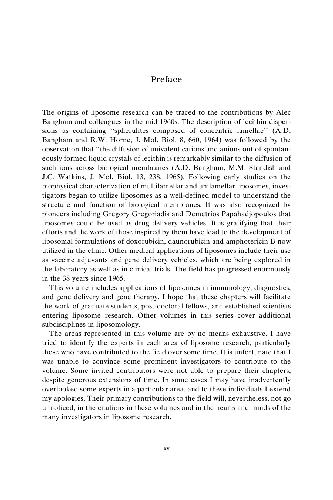
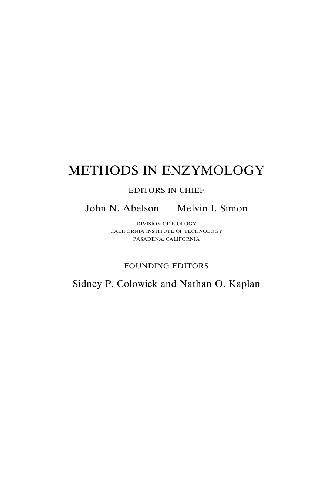
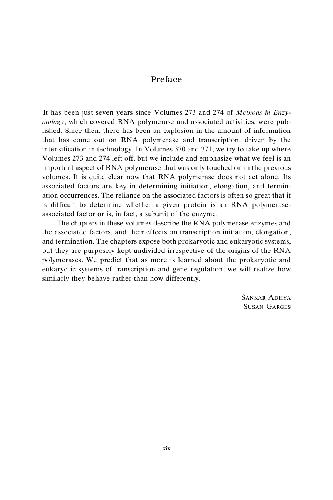

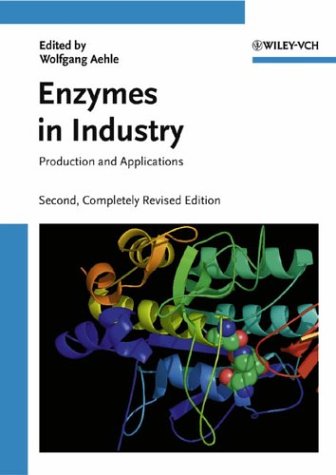
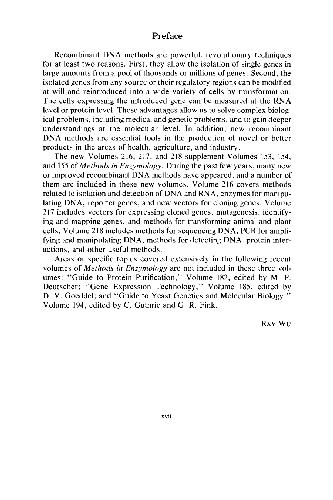
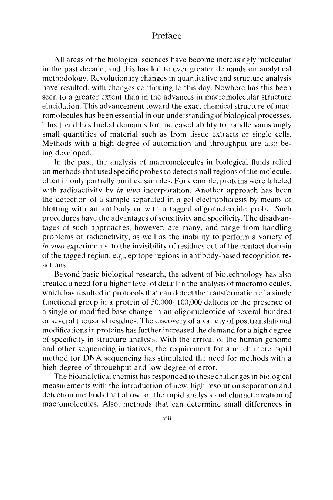
Reviews
There are no reviews yet.